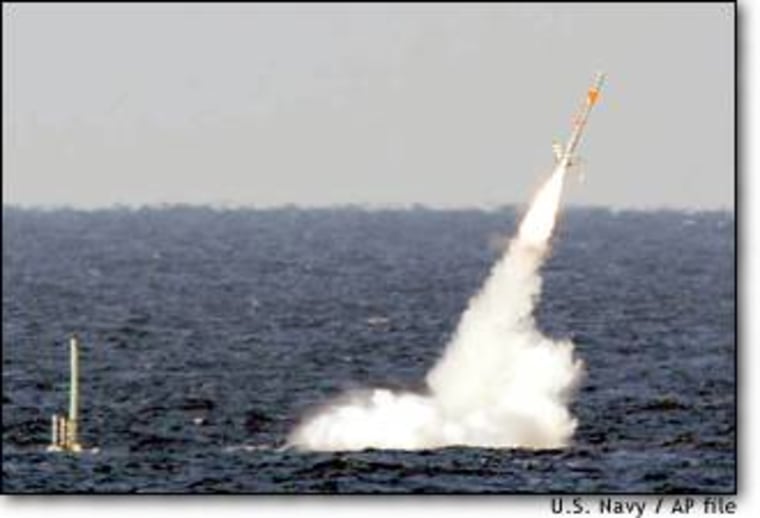During the 1990s, when the United States wanted to pinpoint a target and destroy it from afar, cruise missiles often were the weapon of choice. Two types of cruise missile sit in the U.S. and British arsenals - the air-launched AGM-86 and the Tomahawk BGM-109 ship or submarine-launched version. Whether armed conventionally or with nuclear warheads, both are highly sophisticated, all-weather land-attack weapons.
They are known as cruise missiles because of the small turbofan engines - similar to those found on commercial airliners - which they use to cruise to their targets.
Cruise missiles are very effective because they are difficult to detect. They have a small cross-section, and fly at very low altitudes. Infra-red detection is difficult because turbofan engines emit little heat.
The ALCS (Airborne Launched Control System) is launched from B-52 or B-1B bombers and is capable of flying thousands of miles while hugging terrain and evading radar. It is considered, with the Navy’s Tomahawk, the most accurate missile in existence. However, the ALCS is capable of delivering a warhead twice the size of that on the Tomahawk — 2,000 pounds as opposed to 1,000 pounds. Air launched cruise missiles have a range of 1,500 miles.
Tomahawk cruise missiles are piloted at high subsonic speeds, over an evasive route by several mission tailored guidance systems. The first operational use was in Operation Desert Storm, 1991, with immense success. The missile has since been used successfully in several other conflicts. These include Bosnia (Operation Deliberate Force) in 1995 and in Iraq again (Operation Desert Strike) in 1996.
Former president Bill Clinton launched cruise missile strikes against training camps run by Osama Bin Laden’s al-Qaeda network in Afghanistan in 1998. Cruise missiles were also fired during the air campaign over Kosovo in 1999.
During launch, a solid propellant rocket fires the Tomahawk missile to sufficient altitude. The turbofan engine then takes over for the cruise portion of flight.
Each missile comes with a terrain contour matching radar, which compares a stored map reference with the actual terrain to fix the missile’s position. The computer can correct the missile’s course, enabling it to fly at very low, landscape-hugging altitudes, and follow a complicated route.
As the missile nears its target, the Digital Scene Matching Area Correlation system takes over. This compares a stored image of the target with the actual target, enabling a very high level of accuracy.
Weapons analyst Bruce Unger, of Randolph-Macon College, Virginia believes that in the event of a war with Iraq, the Tomahawk missiles will be relied upon by the US military, more than the ALCS. He says Tomahawks will be used from surface ships, and will help clear the way for any ground invasion, much like during the 1990-91 Gulf War.
The U.S. is currently working on a version of the missile which can be re-targeted mid-flight. It would also be able to circle its target for several hours and with on-board TV cameras, allow commanders to assess damage to the target, and, if necessary redirect the missile to another target.
